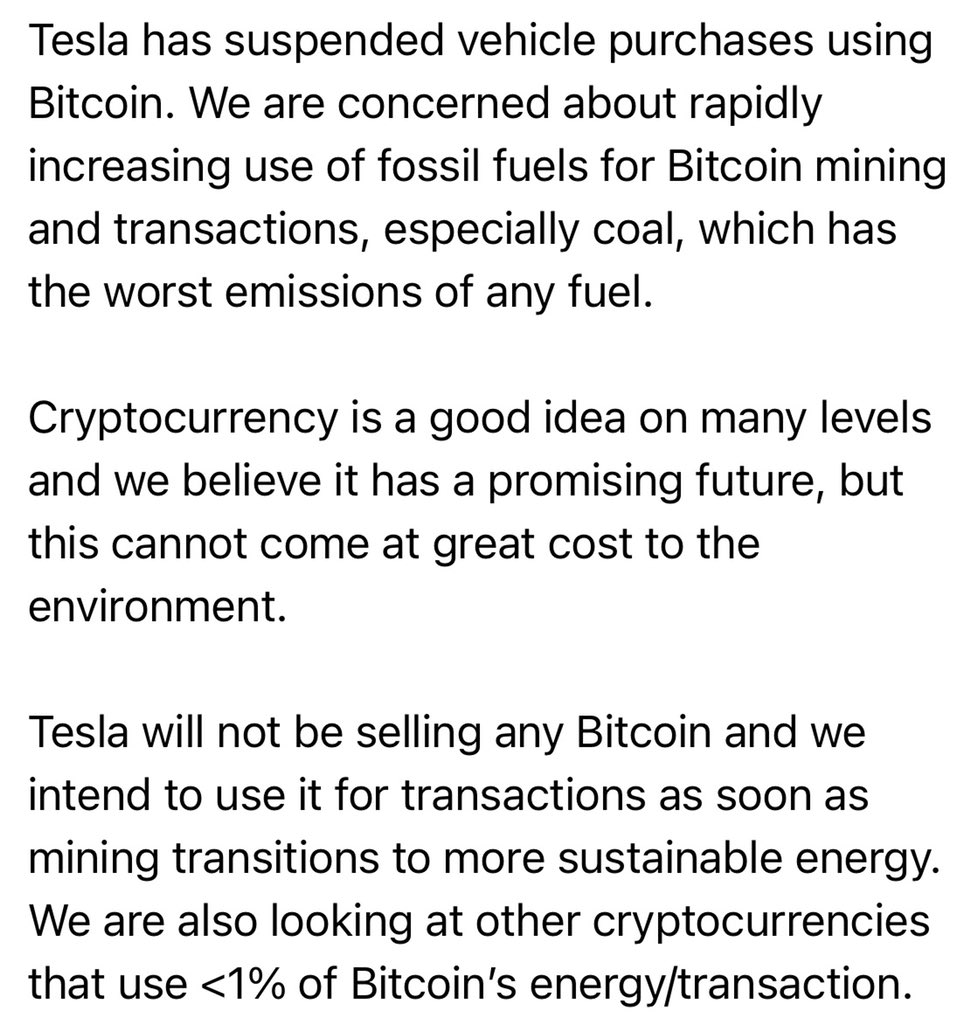Weekly Thing #186 / Blockchain, Pairing, Sharding
I’m Jamie Thingelstad, and this is the Weekly Thing. Check out previous issues at the archive.
Hello there! 👋
There are two fun milestones this week!
It is the four year anniversary of the Weekly Thing! 🥳 The Weekly Thing has evolved so much since the first issue. The full archive is a fun walk through memory lane and the continually evolving structure that has now become home. Thank you all for joining in the journey with me! Without all of you it would be pretty lonely here. 🤝
Sharing the Weekly Thing would be a great way to celebrate this milestone. 🎊
- Share with the Weekly Thing with your networks.
- Forwarding the email to friends that might be interested.
- I also recently put the Weekly Thing on Product Hunt if you want to support it there!
Now, the second milestone…
For the last few weeks I’ve shared a teaser in the Weekly Thing about a new project we were working up. Well, it is now a thing… 🚨
We’ve started Reading Things, a newsletter all about books! 📚
Some details…
- Reading Things is published by our whole family! I think that is pretty unique!
- New issues are sent quarterly. Four emails a year. Easy on your inbox.
- It’s not just about reading books, but also extends to things related to books. Like Tammy’s Corner and the bookstore challenge.
- It is fully private of course. No affiliate links. No tracking codes. We even skipped linking to any “buy now” pages.
The first issue was sent last week. If you sign-up for Reading Things you will get the first one, and all future issues, sent to your inbox! Next one will be in July.
Must Read
Why the blockchain matters | Seth’s Blog
Godin writes a very approachable explainer on blockchain technology and why it matters.
And that’s the first reason that the blockchain matters—because there’s a chance that it might lead to more open, resilient, market-focused networks and databases.
Continuing…
The distributed nature of the blockchain, combined with this novel way of funding early contributions means that the network effect may very well bring powerful new databases to the fore, creating new ways for us to interact.
I like his explanation a lot more than mine. I keep saying the Blockchain is a technology solution to trust. I think that is true, but his connection to decentralization is very powerful. He also invokes Wikipedia which I’m a huge fan and supporter of. It is interesting to consider his analogy. I’ve supported Wikipedia as a non-profit for years. If I could buy Wikipedia Tokens on an exchange, I would.
The Mortifying Ordeal of Pairing All Day
This is an insightful and deep article sharing Bennet’s experience pair programming every day over a long period of time. I found this a compelling read as it hits on the emotional aspects of pair programming, and the impact it had on her.
Pairing requires being vulnerable, to another human being, for hours at a time. Intimacy, both physical and mental. I had to share space, decisions, thought processes, and often feelings with this person.
And continued…
I had to confront a lot of my fears about myself. I had to learn to show someone else all the things I didn’t know, my limitations as a human and a software engineer.
I doubt many developers that sit down to pair program for an extended period consider these factors, but they may very well feel them and not know the source.
“The first to apologize is the bravest.
The first to forgive is the strongest.
The first to forget is the happiest.”

A gorgeous spring evening with tons of people in the park doing soccer and other sports.
May 10, 2021
Pamela Park, Edina MN
Recommended Links
Apple Watch Likely to Gain Blood Pressure, Blood Glucose, and Blood Alcohol Monitoring - MacRumors
We’ve heard rumors of blood sugar monitoring via Apple Watch before and it hasn’t happened yet, but if these capabilities became a reality I would be first in line to get it. Being able to get quick feedback on things that impact your blood sugar level would be incredible for health. Same with blood pressure.
A hybrid approach to work — The Keyword — Google
Google CEO sharing how Google is planning to approach work as the pandemic starts to fade. It is very interesting to see how companies are adapting with all the learnings from working distributed during the pandemic.
What is the OSI model?
I’ve attempted to use the OSI model to solve complex problems in other technical domains and it has never worked very well. The takeaway I got from this article is it isn’t even that great at the problem it is advertised to describe! 🤦♂️
A New Hope (for Gas Price) | Etherscan Blog
Not so much an explainer on Ethereum gas prices but an interesting article that looks at the recent (and now no longer) drop in gas prices. The article helps understand some of the technical complexity in Ethereum.
Why sharding is great: demystifying the technical properties
Very detailed technical post by Vitalik Buterin, creator of Ethereum, describing a sharding approach to improve the scalability of blockchains. The random committee approach he describes is novel and interesting.
Hence, what we do is we randomly split up the work of doing the verification. We randomly shuffle the validator list, and we assign the first 100 validators in the shuffled list to verify the first block, the second 100 validators in the shuffled list to verify the second block, etc. A randomly selected group of validators that gets assigned to verify a block (or perform some other task) is called a committee.
The lengths that public blockchains have to go through to defend against malicious attacks are interesting, and scale is often the thing that is sacrificed. This is a fascinating read on how to get that scale without compromising security.
This is a map of America’s broadband problem - The Verge
I haven’t seen broadband adoption on a map before but this is helpful. I was surprised to see my home state of North Dakota is nearly all over the threshold.
Just 4 percent of U.S. iPhone users opt in to ad tracking
4%.
Four percent.
People are too quick to assume nobody values privacy.
Why I Quit Coffee and What It Did for Productivity - Toggl Blog
I really enjoy my coffee. I really do. But I do wonder sometimes if… the unspeakable.
It wasn’t until two weeks later when my withdrawal symptoms withered away. The brain fog disappeared, I slept better, and best of all, my productivity was at an all-time high.
😬☕️
Decentralized autonomous organisations (DAOs) | ethereum.org
These DAO’s are very intriguing entities to create on Ethereum. The use cases are easy to think about.
Think of them like an internet-native business that’s collectively owned and managed by its members. They have built-in treasuries that no one has the authority to access without the approval of the group. Decisions are governed by proposals and voting to ensure everyone in the organisation has a voice.
Want to buy a cabin with some friends? Own it through a DAO. DAOstack is an interesting service to create your own DAO’s using their building blocks. Fascinating stuff.
Market-Making on the Internet – Stratechery by Ben Thompson
Interesting take from Thompson (as always!) thinking through what Twitter-Scroll could be doing to create a market between users and creators. It is particularly interesting where Thompson leaves this:
The web started with no economy, then built a commoditized advertising-only one, and now is increasingly a market for all sorts of goods and services — the more differentiated the better. That doesn’t just mean interoperability, in the purest most fungible form of money, but also opportunity.
As I read this it made me think of the Brave web browser and the Basic Attention Token that it has created. This market-making concept is very compatible with various blockchain web3 solutions.
Crazy New Ideas
Thoughtful piece from Paul Graham and evaluating ideas that sound crazy, and being aware of the expertise of the person sharing the idea, and mindful of the impact of the current paradigm.
Most implausible-sounding ideas are in fact bad and could be safely dismissed. But not when they’re proposed by reasonable domain experts. If the person proposing the idea is reasonable, then they know how implausible it sounds. And yet they’re proposing it anyway. That suggests they know something you don’t. And if they have deep domain expertise, that’s probably the source of it.
🤔
Pinata Dedicated IPFS Gateways
I’ve been using Pinata do do some playing with IPFS. IPFS makes my head hurt a bit since it isn’t entirely clear how and where your files live, but I think it is an interesting and important tech. It is why I’m intrigued with Filecoin. The cost is a little high for hobby users, but this feature from Pinata allows you to bring IPFS into your own domain in a simple way.
Journal
Four Years of the Weekly Thing
Today marks the four year anniversary of the Weekly Thing! Issue 1 was sent May 13, 2017. When I started this project I figured I would do it for a year and then see. Now it is four years later and I’m still enjoying it.
Here are some learnings I would share.
- Having a well defined structure that I flow content “through and in” has been key to making this something I can do over the long haul. If I started each week with a blank document I don’t think it would work well.
- It is surprising how often the hardest thing is writing the little intro bit in the beginning. Sometimes I find myself with traditional writers block. Other times major things in the world have brought a seriousness to the week that needs to be addressed. I didn’t expect this when I started this project.
- Getting a new photo every week is difficult in the winter when the daylight is so short.
- I’ve been able to get to know a lot of readers more than I ever would have any other way. Email is much more personal than blogging or social media.
- The rare times that an issue doesn’t go out on Saturday at 7am CT, I often get pings from people asking what is up? I love that. It’s fun that this has become part of a few peoples Saturday morning routines.
- It is harder to keep up with the email replies I get from people. If you sent me a reply and I didn’t get back in a few days, or at all, I’m sorry. I read it all!
- I love the archive that is created by writing every week. In addition to blogging, this is a very rewarding activity that I plan to keep doing.
- Automate as much as possible. This keeps the busywork down. I’ve got extensive automation to keep everything humming.
And now onto the years ahead!
Wish: Tesla “Learn to Drive” App
Mazie is taking drivers education and soon we are going to find a vacant parking lot and I’m going to have her get behind the wheel and drive. Contemplating this I decided we are going to use the Honda Pilot for this, and not the Tesla Model 3. Driving a Tesla is so different from a gas car that I worry it wouldn’t set her up well. I actually wish I had my Mini Cooper S with manual transmission for this exercise.
While the differences between electric and gas are so large, there are a lot of ways that the Model 3 could be a better platform for a learner.
This all made me think that it would be really neat if Tesla had a “Learn to Drive” app. What would it do?
- The app would allow you to put the car in learner mode. This would not only reduce the power output of the car, similar to valet mode, but also change the power curve to match that of a gas engine. Electric motors have so much low end torque, and I would worry about that amount of power with a brand new driver. I would think software could change that to emulate a gas engines curve, and simulate a gas experience.
- This app would allow the user to have controls for the car, most notably to safely stop the car. A big red “STOP” button on the screen would give the parent or teacher the ability to override.
- The car could be put in a defensive mode, where the radar system that detects nearby objects doesn’t just give you a warning but the car would actually stop to avoid any collision.
- The main display in the Model 3 could be swapped out with a learning display, taking realtime feeds from all the cameras and overlaying driving paths. Maybe even engage the autopilot system to not drive the car, but show on the screen where the car should be driven.
All of this highlights the power of a car being thought of as a software platform. The software can change the entire characteristic of the car could change for this special, and very important, exercise.
Crypto Markets and Kids Soccer
On Wednesday May 12 at 5:06pm CT Elon Musk tweeted that Tesla would no longer accept Bitcoin to buy cars. The company also has $1.5B of Bitcoin on their balance sheet, reported $300M of which they’ve sold. Musks message is about the carbon footprint of Bitcoin. Odd since this isn’t new information.
Tesla & Bitcoin
– Elon Musk (@elonmusk) May 12, 2021
Anyway, my commentary is not about Musk’s position but the market reaction. Immediately, as one would expect, Bitcoin dropped 10%.
BTC
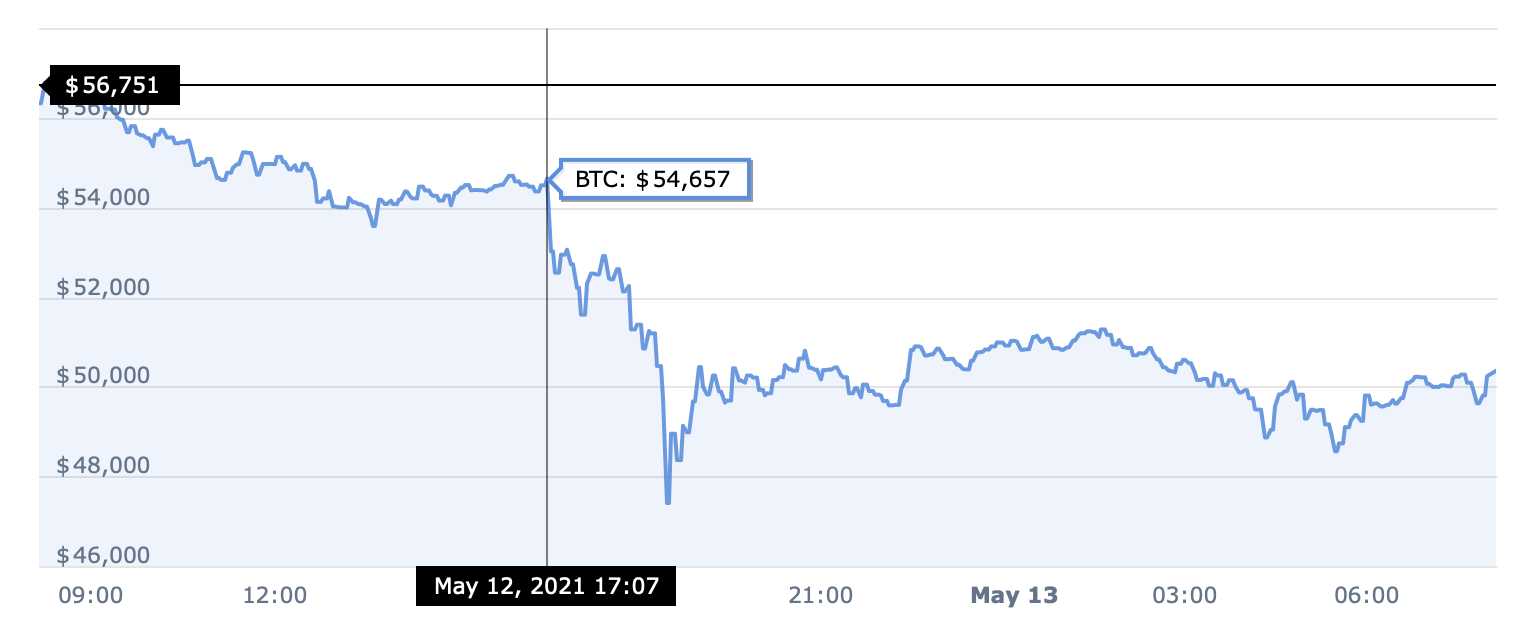
Now lets talk about kids soccer. Any parent that has watched their kids play soccer knows what it looks like. There is a big group of kids chasing the ball around with no tactics or strategy. Ball is over there, run and get it.
The crypto market was all kids soccer with this. Filecoin, which has nothing in common with the Bitcoin news dropped nearly the same, with a slight time lag.
FIL

Then Cardano drops the same too. Cardano however is a massively more efficient blockchain. The fundamental argument doesn’t apply. They even told that story.
ADA
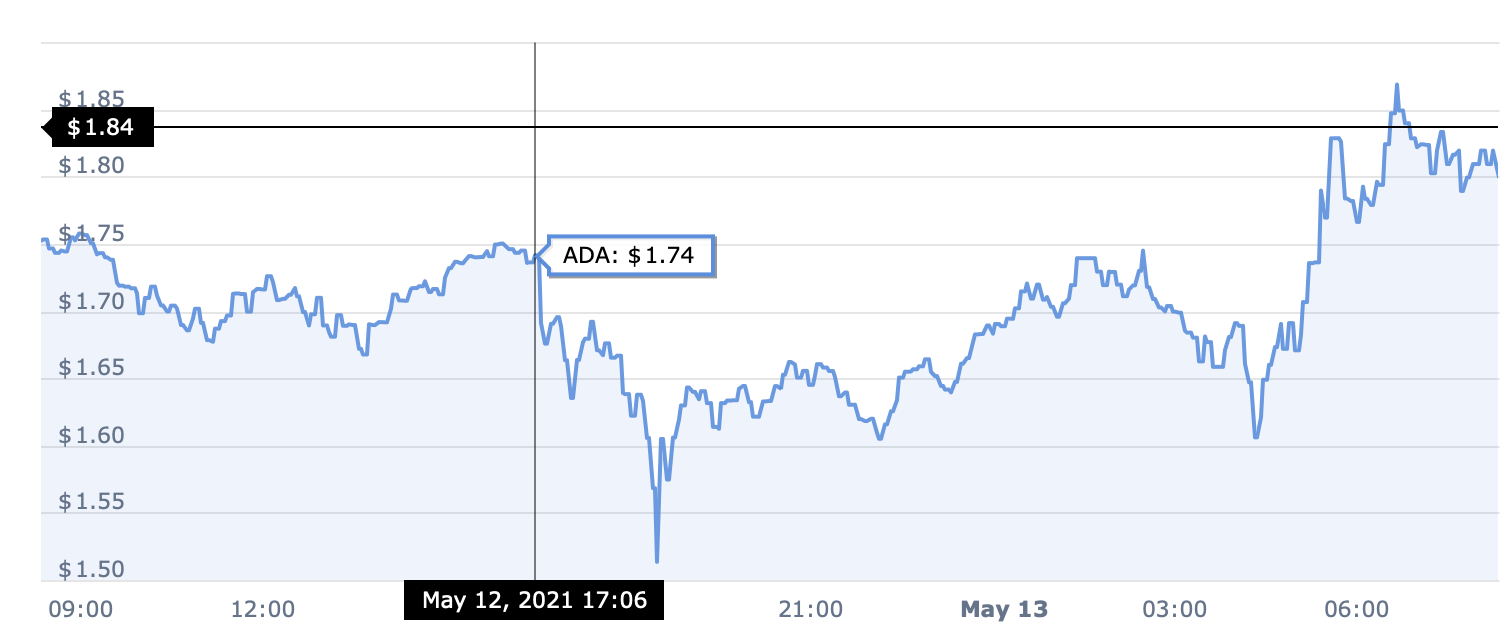
The point here is that these markets and investors are still treating all of these assets as a single thing. Only Ethereum in recent months has broken out and moves materially on its own. I put this in my approach, but I think it is really important. You need some mental model of the utility for each of these assets. That utility should drive how you value them, and how you differently value them.
I love the #TeamSPS Cyberweek 2020 Shirt, and for the first time a paired challenge coin! 🪙 The challenge coin was also minted as an NFT. We also included the themed deck of playing cards. ♠️ Thank you to Kat Alberts for the great design.
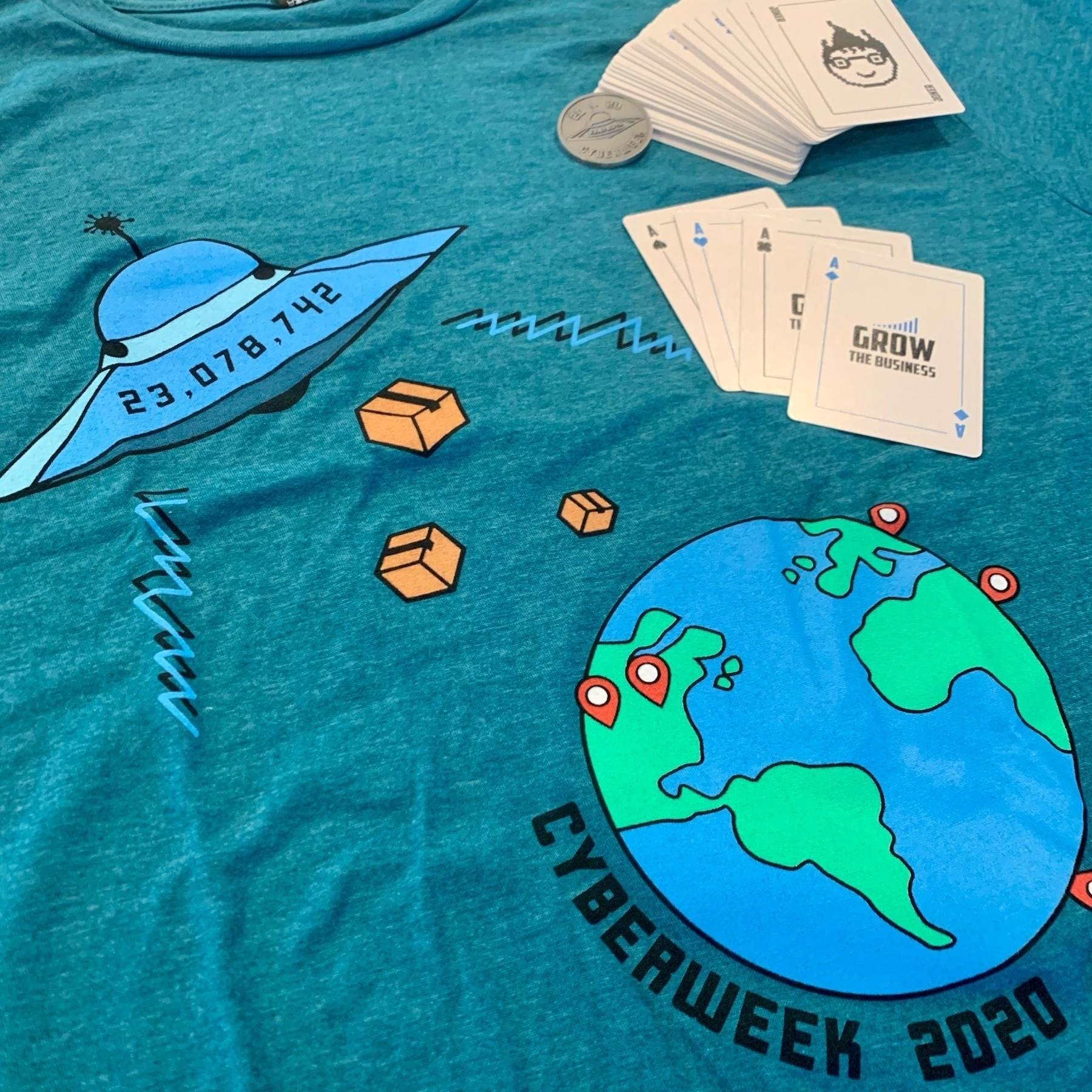
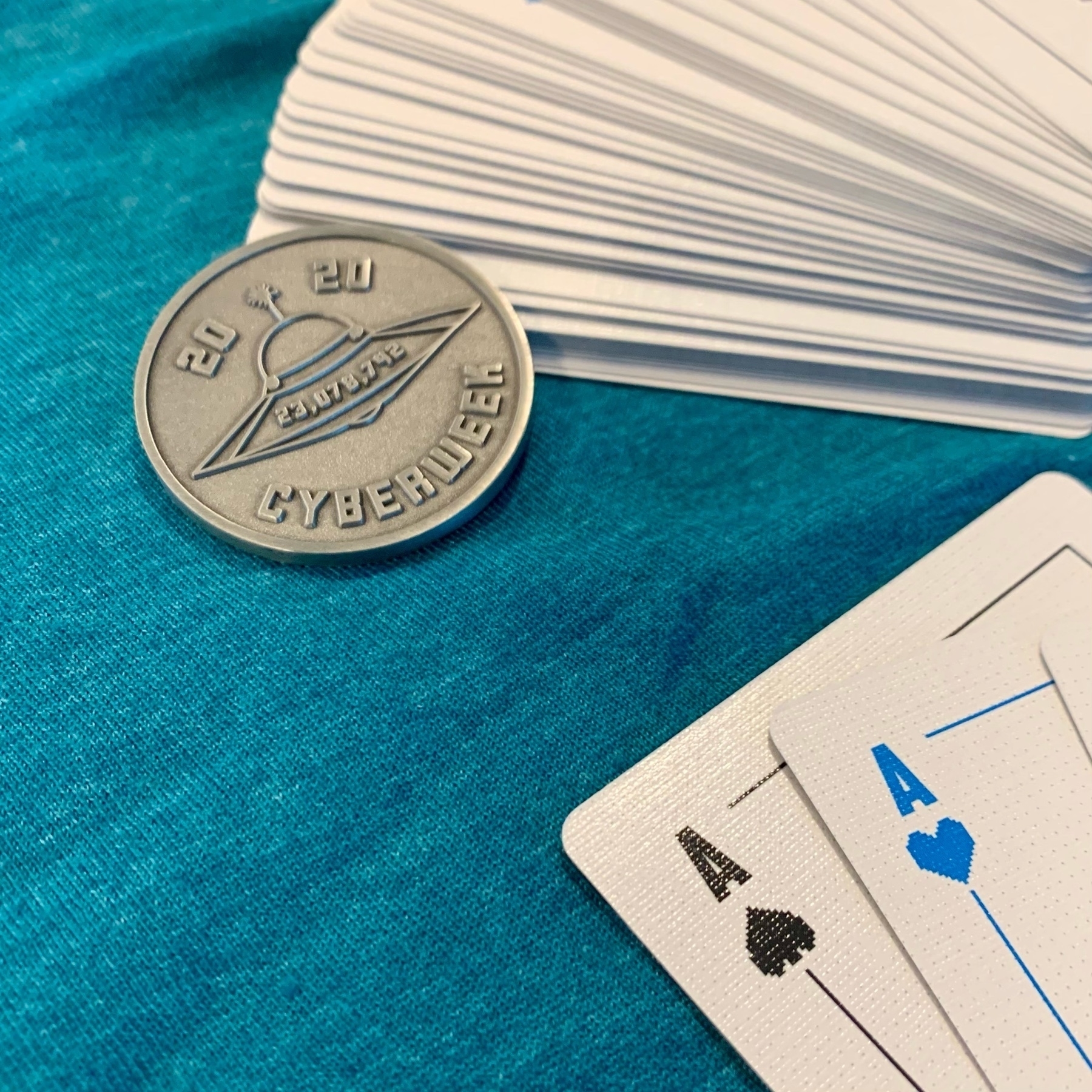
Sat down to figure out what was wrong with my 27-inch 2019 Retina 5K iMac. Beach balls. Terrible performance. Random crashes.
Turns out the Fusion Drive had “split” and the machine was completely confused about the disk system.
Complete rebuild and it is fast again!
A very Happy Mother’s Day to my Mom!
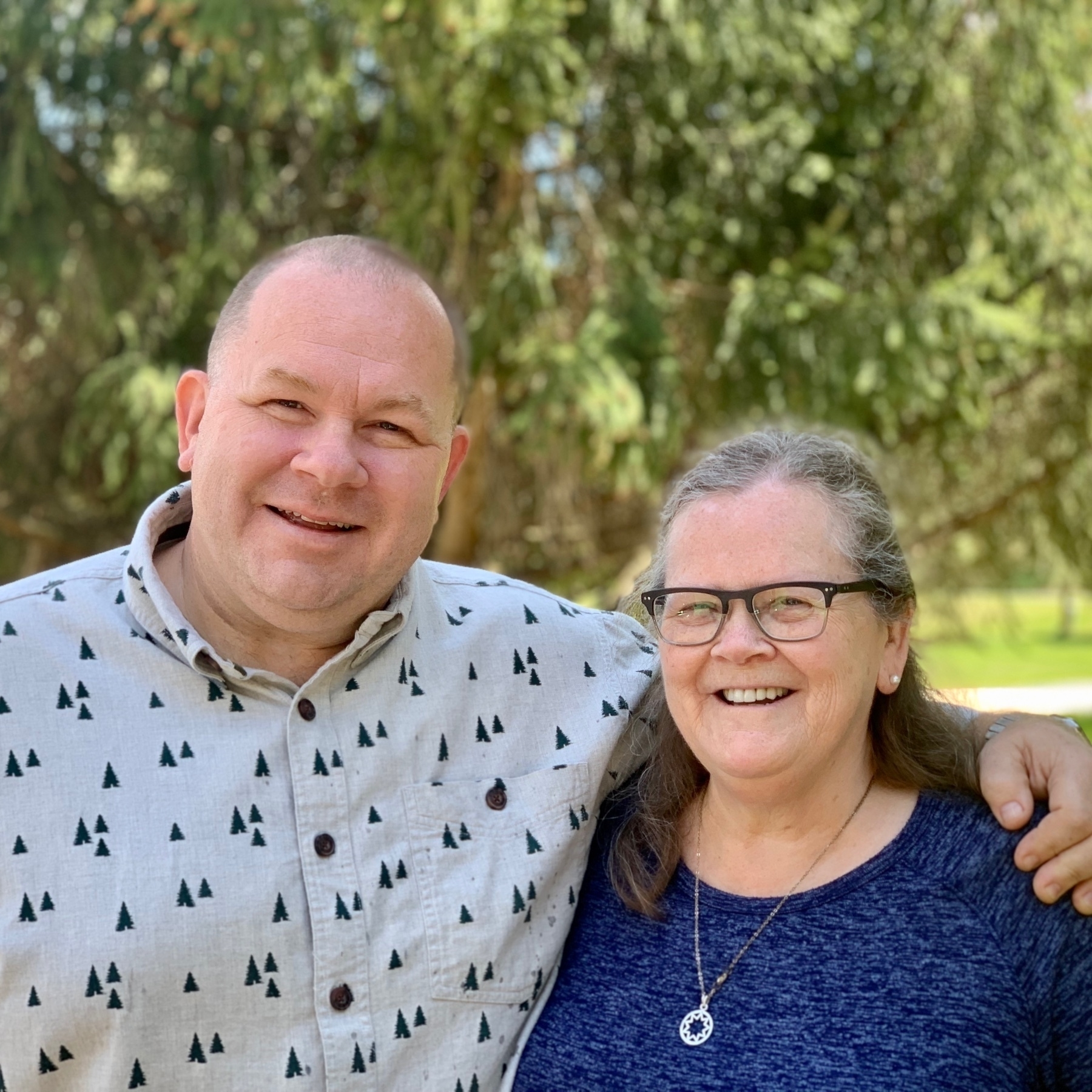
We just published the very first issue of Reading Things! 📚 If you enjoy books check it out! This is a new project from our whole family. 👋
Ethereum is up 32% in the last week, over 11% in just the last 24 hours! Hard to say what is driving it up, but it has definitely diverged significantly from Bitcoin.
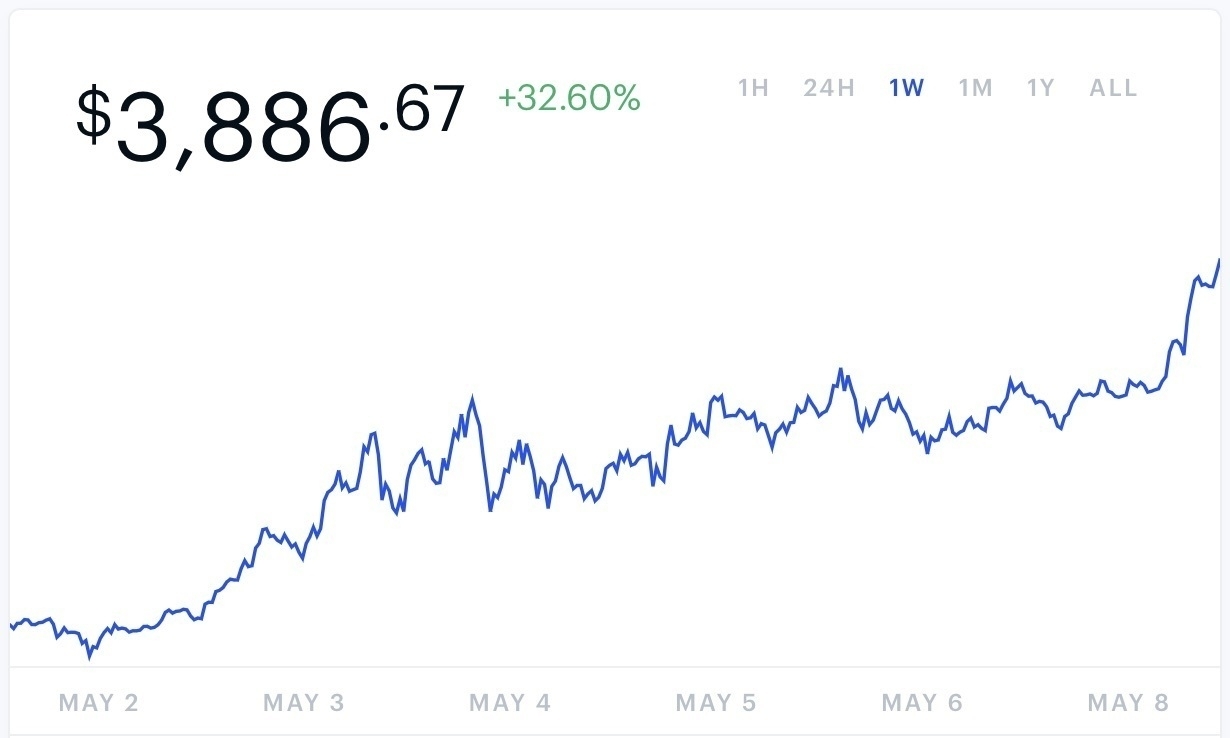
We’ve had our pontoon for a few years and the hassle of taking the cover off and on each weekend was resulting in less trips on the water. This year we got a canopy! I’m so happy to put the boat cover away for the summer and we will definitely get more time on the water!

Today is Boat Day 2021! I got the boat out of storage from LaCanne’s Marine and took it back up the Cannon River for the summer! This is such a fun tradition for me. The kids both made me cards to celebrate Boat Day!
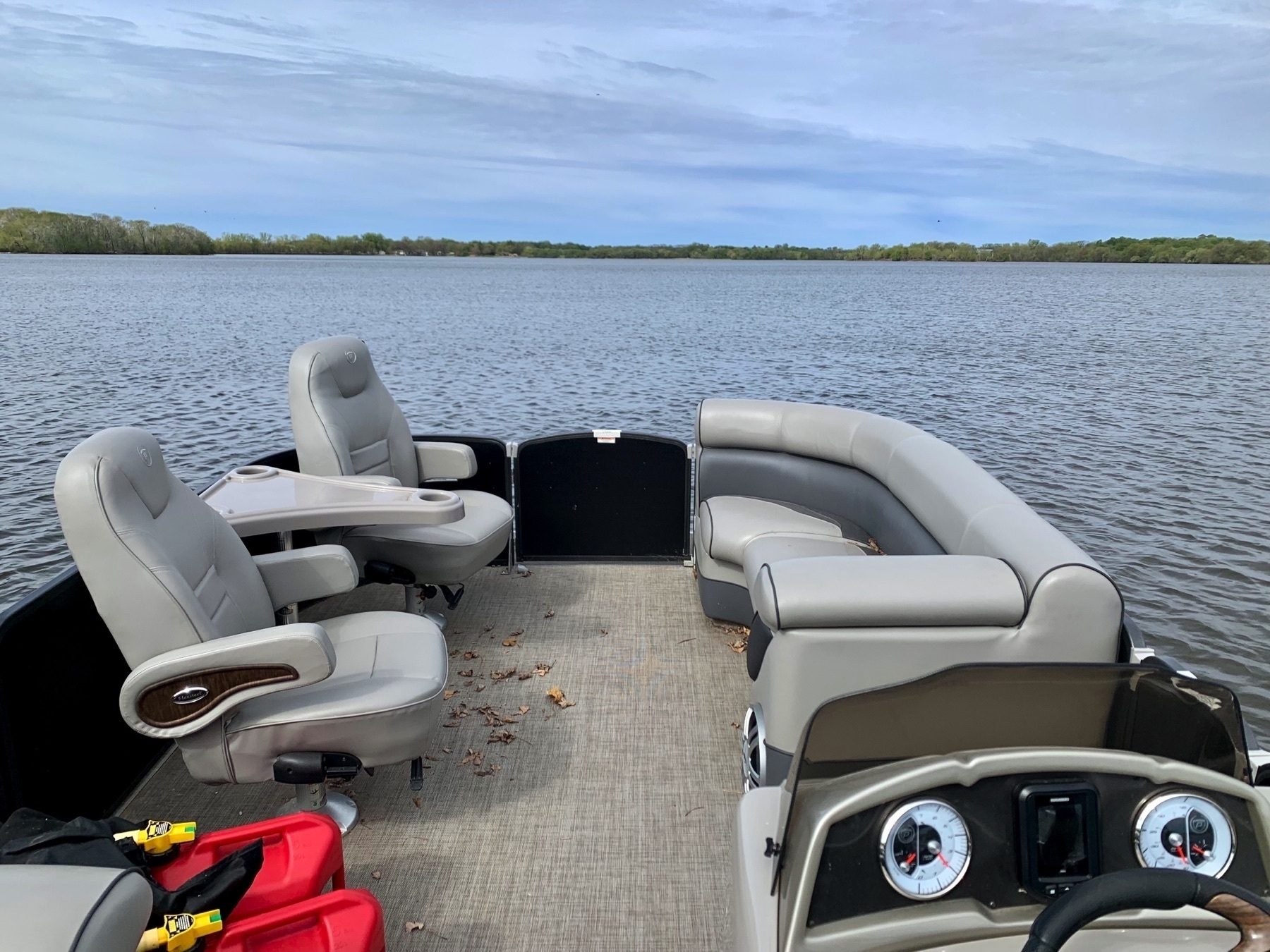
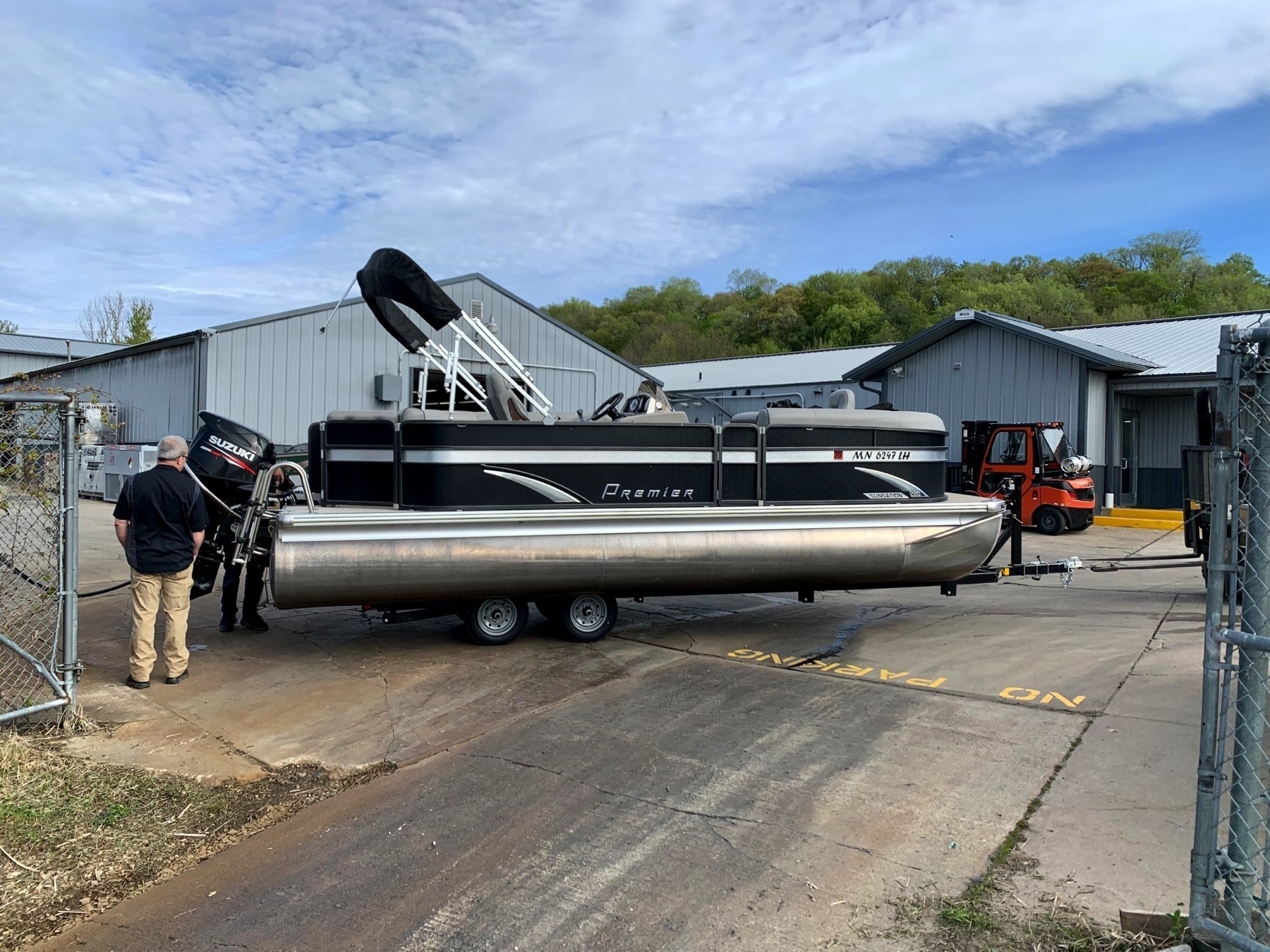
Tammy put together her 50 Puzzle today. It was so rewarding seeing the final puzzle at full size. The images came out great. The little details all hit the right spots. The kids and I are proud of this one! Create Jigsaw Puzzles.com did a great job with it.
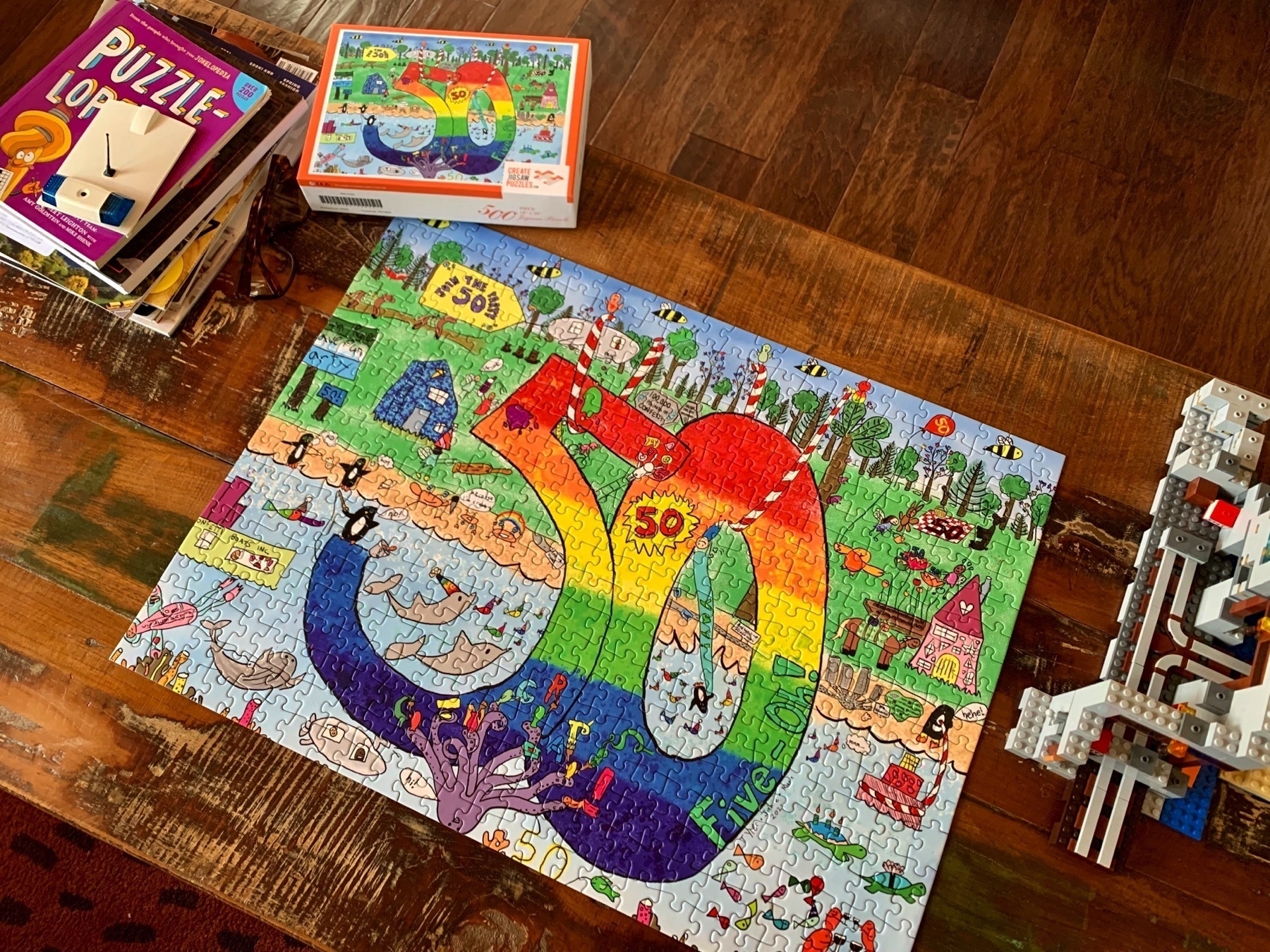
FYI
Earth Restored — Toby Ord
These are such incredible photos. 🌏
Introducing the Medical Record | 1Password
Cool new addition to 1Password! Now I know where I will keep my COVID-19 Vaccination Record!
Meditation, Calm Focus, and Productivity | Being Productive
Dini’s comments on meditation and his experiences are very similar to mine. 🧘
Upvote Tracker
Great example how looking at data over time shows things you wouldn’t otherwise see. In this case, bot manipulation of upvotes on Reddit.
Grand jury subpoena for Signal user data, Eastern District of Virginia — Signal
Signal shares the correspondence of their first data subpoena from 2016. It is interesting to see the correspondence.
Fortune
Here is your fortune…
Bridge ahead. Pay troll.
Thank you for subscribing to the Weekly Thing!
About
I’ve been an active blogger since 2004. I’ve been microblogging via Twitter and my websites since 2006. My link blog goes back to 2005. I think about the Internet and our use of it over decades and am focused on preserving the personal and non-commercial parts of the Internet as well as the corporate and governmental parts. I’m a long-time supporter of the Electronic Frontier Foundation, Creative Commons and Internet Archive as well as other organizations that work on this.
Website LinkedIn Twitter Finger Buy me a coffee
Recent Issues
- Weekly Thing #185 / Signal, Peloton, Meebits
- Weekly Thing #184 / UML, Vizy, Markdown
- Weekly Thing #183 / Visidata, FTP, Amazon
- Weekly Thing #182 / Technical Debt, Identity, Neeva
This work by Jamie Thingelstad is licensed under CC BY-SA 4.0.
My opinions are my own and not those of any affiliates. The content is non-malicious and ad-free, posted at my discretion. Source attribution is omitted due to potential errors. Your privacy is respected; no tracking is in place.
